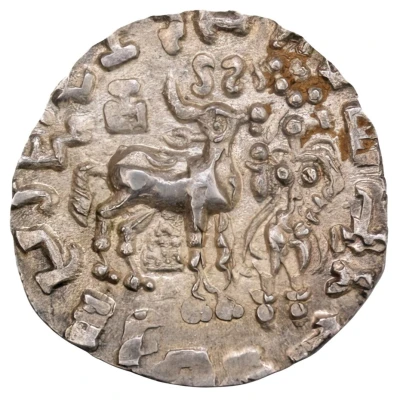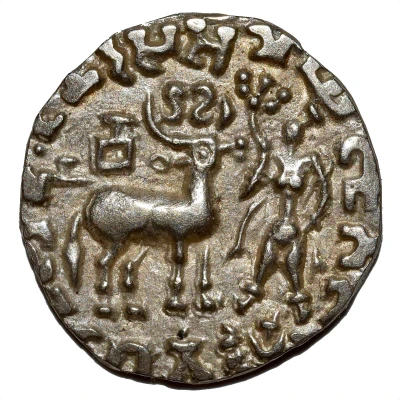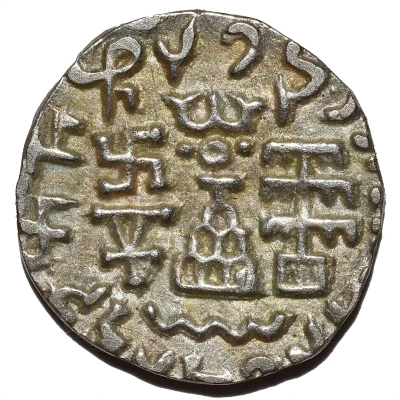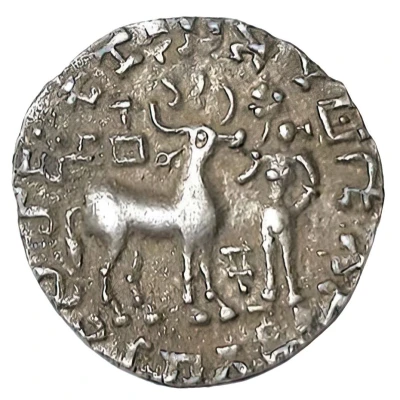


© Amit Kher (CC BY-NC)
1 Drachm - Amoghabhuti 200 BC - 100 BC
| Silver | 2.07 g | 18.51 mm |
| Issuer | Kuninda Kingdom (Western Himalayas) |
|---|---|
| Type | Standard circulation coin |
| Years | 200 BC - 100 BC |
| Value | Drachm (1) |
| Currency | Drachm (200 BC to 100 BC) |
| Composition | Silver |
| Weight | 2.07 g |
| Diameter | 18.51 mm |
| Thickness | 1.57 mm |
| Shape | Round (irregular) |
| Technique | Hammered |
| Demonetized | Yes |
| Updated | 2024-10-10 |
| Numista | N#418143 |
|---|---|
| Rarity index | 95% |
Reverse
A centrally placed six-arched hill (chaitya) with parasol, a wavy river line below and a Nandipada (Triratna) above, Swastika above Indradhvaja on the left field and a tree within railings on the right, the Kharoshthi legend around the field
Lettering: "(Rana Kunindasa Amoghbu)tisa Maharajasa" (Great king Amogh, of the Kunindas)
Edge
Plain
Comment
Pieper 1201 - Six-arched hill below deer
Variant also mentioned in ACC #7 - https://www.ancientcoins.ca/kuninda/kuninda.htm
Interesting fact
One interesting fact about the 1 Drachm - Amoghabhuti coin from the Kuninda Kingdom is that it features a unique blend of Greek and Indian architectural styles on its reverse side. The coin's design showcases a combination of Greek columns and Indian temple architecture, reflecting the cultural exchange and influences that existed between the two civilizations during that time period.




